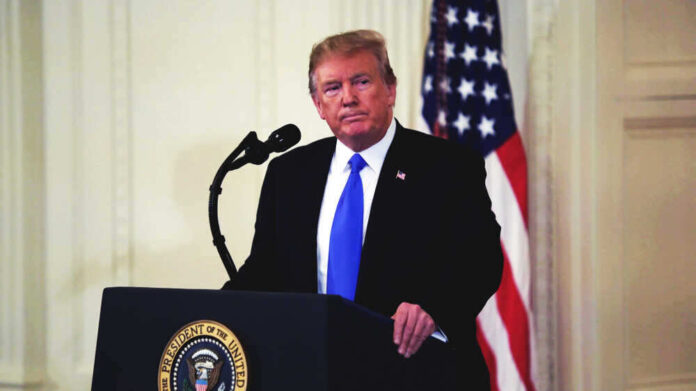
In a move that could reshape American manufacturing and job growth, international markets responded to President Trump’s decision to back off on Chinese import tariffs after negotiations.
President Trump is using his unmatched negotiation skills to secure a better trade deal with China, showing how his America First policy is bringing back leverage against foreign competitors.
Trump confirmed that the hefty 145% tariff rate on Chinese imports will be significantly reduced following talks with Chinese President Xi Jinping, demonstrating his strategic flexibility while maintaining pressure on Beijing.
Speaking from the Oval Office, Trump made it clear that while tariffs would decrease, they would not disappear entirely.
“145 percent is very high. It won’t be that high, it’s not going to be that high … it won’t be anywhere near that high,” Trump told reporters. “It will come down substantially, but it won’t be zero.”
Investors responded positively to this announcement, with gains in US stock indices and Asian markets, including Japan and Hong Kong.
The President’s strategy shows his commitment to protecting American manufacturing and jobs while still being open to mutually beneficial trade relationships.
This represents a significant shift in tone from the administration’s earlier aggressive stance, signaling Trump’s confidence in achieving a favorable outcome for American workers and businesses.
Treasury Secretary Scott Bessent has indicated that the administration is seeking a de-escalation of the trade war, calling the current situation unsustainable.
The ultimate goal remains a rebalancing of trade that benefits American interests first, addressing decades of unfair practices that previous administrations failed to confront.
Meanwhile, Trump’s willingness to be “very nice” in negotiations with China proves his skills in international relations.
Unlike career politicians who talk tough but achieve little, Trump understands that maximum pressure must eventually lead to constructive dialogue.
This strategy has already shown results, with Asian stock markets rising following Trump’s latest remarks.
The Chinese government has yet to respond to Trump’s latest statements officially.
However, state media suggests Beijing is beginning to realize the negative impact of its unfair trade practices on its own economy.
China’s Foreign Ministry has urged dialogue “based on equality and mutual benefit” – exactly what Trump has been demanding all along.
In addition to addressing trade concerns, Trump reassured markets by stating he has “no intention of firing” Federal Reserve Chair Jerome Powell, though he wants the Fed to be “a little more active” in cutting interest rates.
National Economic Council Director Kevin Hassett previously indicated that Trump was exploring options regarding Powell, revealing the high stakes involved in these discussions.
However, Trump’s recent comments signaled stability, which may soothe the global financial waves caused by earlier market sell-offs.
Furthermore, the IMF had previously predicted a “significant slowdown” in global growth due to increased tariffs, but failed to acknowledge that America’s economy has consistently outperformed expectations under Trump’s leadership.
With a potential reduction in tariffs coupled with America-first trade deals, Trump is positioning the U.S. for continued economic dominance.
While China has attempted to retaliate with a 125% tax on American products, its dependence on U.S. markets gives Trump significant leverage.
By signaling a willingness to reduce tariffs while maintaining pressure, Trump is demonstrating the art of the deal on the world stage.






























